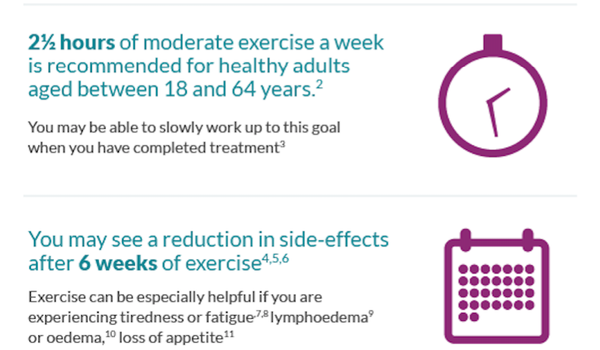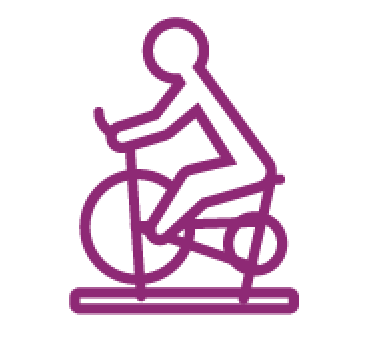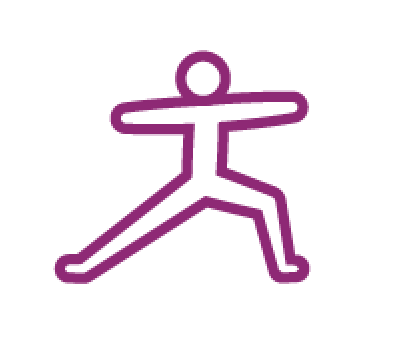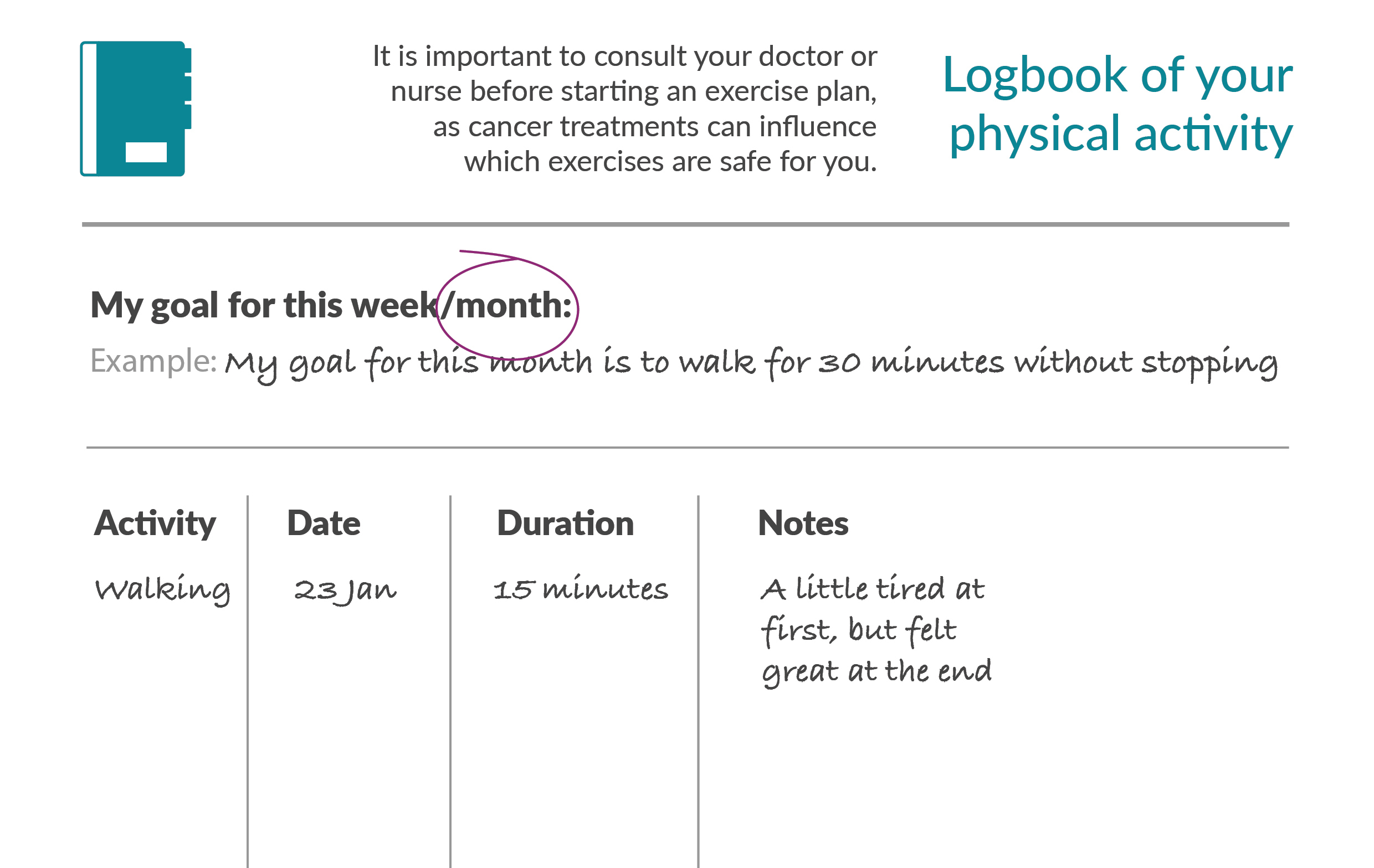Managing side effects of chemotherapy with exercise

Physical activity may help alleviate some side effects of chemotherapy and help you build up strength both during and after treatment.
Consult your doctor or nurse before starting an exercise plan, as cancer treatments can influence which exercises are safe for you.1
2.5 hours of moderate exercise a week is recommended for healthy adults aged between 18 and 64 years2
You may be able to slowly work up to this goal when you have completed treatment2,3

You may see a reduction in side effects after 6 weeks of exercise4,5,6
Exercise can be especially helpful if you are experiencing tiredness or fatigue,7,8 lymphoedema9 or oedema,10 loss of appetite11

Think about which types of exercise you enjoy the most:

Aerobic
Walking, dancing, swimming, cycling3,4
Walking may help alleviate constipation12

Resistance
Light weightlifting, edurance training3,4
Gradual resistance exercises build up your power and endurance4

Flexibility
Yoga, tai chi, stretching3
Regular yoga may lessen fatigue and help you sleep13

Balance
Meditative movement therapies, yoga, qigong, tai chi14
Meditative movement therapies may increase your quality of life14,15
Keep a logbook of your physical activity
Ask your doctor about a personal healthy weekly exercise goal
Share the logbook with your doctor at your next appointment.

